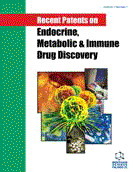Abstract
In the management and treatment of osteoporosis, the target is to assess fracture risk and the end-point is to prevent fractures. Traditionally, measurement of bone mineral density (BMD) by dual energy X-ray absorptiometry (DXA) has been the standard method for diagnosing osteoporosis, in addition to assessing fracture risk and therapeutic effects. Quantitative computed tomography (QCT) can quantify volumetric BMD, and cancellous bone can be measured independently of surrounding cortical bone and aortic calcification. Hip structure analysis (HSA) is a method using the DXA scan image and provides useful data for assessing hip fracture risk. Recently, new tools to assess osteoporosis and fracture risk have been developed. One of the recent advances has been the development of the FRAX (Fracture Risk Assessment Tool), which is helpful in conveying fracture risk to patients and providing treatment guidance to clinicians. Another advance is the finite element (FE) method based on data from computed tomography (CT), which is useful for assessing bone strength, fracture risk, and therapeutic effects on osteoporosis. In selecting the most appropriate drug for osteoporosis treatment, assessment by bone metabolic markers is an important factor. In this review, recent patents for assessing osteoporosis and fracture risk are discussed.
Keywords: Bone metabolic marker, bone mineral density, finite element method, fracture risk, hip structure analysis, osteoporosis assessment.
 76
76





















